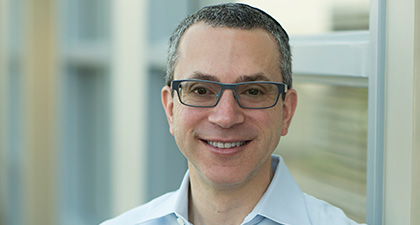Rabbi Hayim Herring, an author, presenter and Jewish community professional consultant based in Minnesota’s Twin Cities, has built a reputation as a visionary who can help bring Jewish institutions into the future.
As a former congregational rabbi, senior federation executive and executive director at a national Jewish foundation, Rabbi Herring is called upon by Jewish groups to provide insight and foresight into new methods in strategic planning, and to help them attract leaders who can appeal to the next generation of Jews.
Rabbi Herring is the author of more than 40 scholarly articles and studies about the contemporary American Jewish community, as well as books including Tomorrow’s Synagogue Today: Creating Vibrant Centers of Jewish Life, and Keeping the Faith in Rabbis: A Community Conversation about Rabbinical Education.
Rabbi Herring spoke to The CJN about a new book he’s working on, as well as some of the challenges facing Jewish leadership today.
You describe yourself as a “non-profit organizational futurist.” What does that mean and what expertise do you offer to those who seek you out?
One of the most essential skills for non-profits, congregations, Jewish organizations in the 21st century is having an entrepreneurial mindset. It’s very easy to tell congregations or organizations to be nimble, but that’s a challenge when you’re running one day-to-day. I work with people around that issue. Related to that is, instead of waiting to react to the future. I help them peer further ahead on their own by working in groups on some methodologies that I’m trained in and experiences that I’ve had.
My question is, do you always want to be playing defence or catch-up? There are things that are out of our control, but to the extent that you can control them, wouldn’t you rather shape your own future than have someone shape it for you?
I still do some of the basics that have not gone away – collaboration, engaging volunteers, especially now when you have four and soon to be five generations of people alive at one time. You can’t use a scattershot strategy to engage volunteers.
You have to customize it for each generation. So collaboration, volunteer engagement, strategic planning, I do all those things.
You’re working on a new book, Game Over, Game On (working title). Can you tell me about it?
Part of my own professional and personal growth has been collaborating with people from outside of the Jewish community. In Minnesota, we have a lot of Lutherans. Lutherans and Jews share lots of commonalities. Each has established congregations and organizations that are struggling by and large with involvement, and a whole host of newer organizations and congregations have developed over the past decade.
What I’m looking at, with a Protestant professor at Luther’s Theological Seminary locally, is what happens when established organizations and congregations try to embrace a new kind of social network thinking – more autonomy, self-direction, democratization. What happens when the established embraces the new? And what happens when the new becomes five to 10 years old and reaches what we would call early maturation? Do they become something of what they tried not to become? Are they something different? And where is the shared learning? Is there shared learning? I don’t know – we’ll find out. Between the old embracing the new and the new as it matures, I think we kind of need each other in the end.
What are the biggest challenges facing contemporary Jewish life in North America for the generations to come?
I would call it disintermediation between the individual and organizations… meaning, I don’t need the institution or congregation to mediate between my values and the impact that I hope to have on my community. So people want community, but they don’t need institutions in the same way that they used to.
In other words, in the past, if you or I wanted to do some good in the world, we would find a congregation or Jewish organization or other non-profit. We would get on a committee, roll up our sleeves, attend meetings, do some work according to the organizational agenda that aligns with our values, maybe work our way up the ladder of leadership and assume some volunteer leadership position.
Today, here is the question that we face. If I can pick my own cause, mobilize people around it, do my own fundraising and marketing and see direct impact relatively soon, why do I have to pay to sit on a committee where incremental work will get done and I might be able to make some sort of difference five to 10 years down the road.
Leaders need to rethink what is it that my community, organization, congregation needs? What is its purpose now, today, given that many of the things it used to do can be done by individuals? How do I now apply yesterday’s thinking and behaviour to today’s reality, which will be different from tomorrow’s?
Are there any similarities between the American and Canadian Jewish communities in this regard?
Some similarities are apparent, but my impression… is that the broader culture in Canada is so vastly different than America’s, and Jewish communities are just microcosms of their broader cultures, that the Jewish communities work differently as well…
What can we in the United States learn from Canada and put into practice in terms of our community that can keep us from melting down and working better together? We are just a border away… but it’s like being a world away. We talk about being a global community. Can we work a little bit more closely with our neighbours?
This interview has been edited and condensed for style and clarity.
